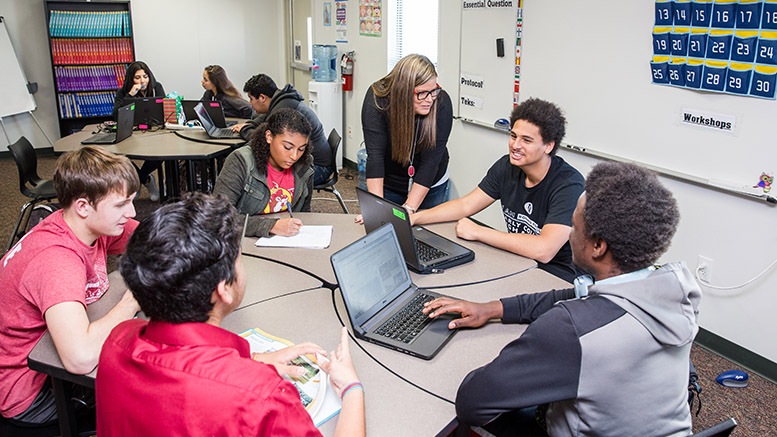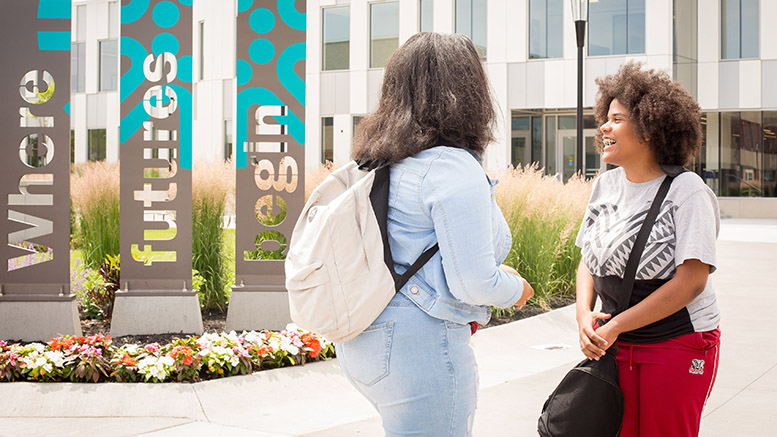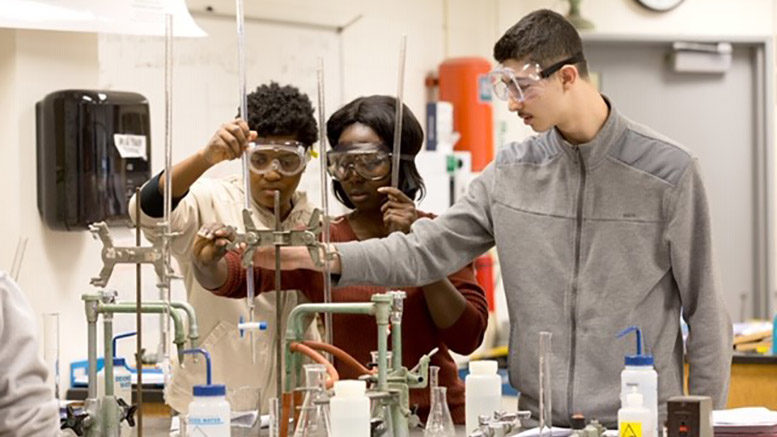Some community colleges are seeing a big surge in dual enrollments that is likely due to the coronavirus pandemic.
Several college leaders cite several factors that are leading more high school students to seek college credits: There is uncertainty over whether high schools will reopen in the fall. Jobs and sports aren’t available. And, in some cases, there is more flexibility in admitting high school students.
Dual enrollment at Montgomery College (MC) in Maryland is already up 300 percent for the fall semester, compared to fall 2019, says Sanjay Rai, senior vice president for academic affairs.
Summer dual enrollment is also up about 300 percent. According to Rai, many students who planned to attend college out of state are now taking college courses closer to home due to uncertainty around the pandemic.
MC had already been aggressively recruiting dual-enrollment students, so “when the pandemic came, we were ready to seize that opportunity,” Rai says. In early May, MC sent a letter to every high school junior and senior encouraging them to apply for dual enrollment this summer.
More than 90 percent of MC courses will be online for fall. High school students also are very comfortable in a virtual environment, Rai says.
Several options
In addition to regular dual enrollment, MC has added other options in recent years.
The Early College program gives qualified high school juniors and seniors a chance to take courses at MC and complete an associate degree in certain areas while simultaneously completing a high school diploma.
To date, 300 students have been accepted to the Early College program for this fall, a big jump from the 151 students last fall. Students also receive free tuition and books. MC and Montgomery County Public Schools jointly fund the program.
The Middle College program, operating in two high schools, allows students to earn college credits by taking Advanced Placement courses, passing the College Board’s College-Level Examination Program (CLEP) exams and taking courses on the MC campus.
An easy transition
Just over 5,000 high school students took at least one college course this summer at Austin Community College (ACC) in Texas. That’s a 28 percent increase over last year, says Mison Zuniga, associate vice president of college and school relations.
Dual enrollment students represent 22 percent of the general college population at ACC, Zuniga says. She expects rising interest in dual enrollment for the fall semester, especially if the public schools don’t physically open and extracurricular activities are canceled.

This spring, “dual-enrolled students made the transition to online learning easily,” Zuniga says. “Younger students are very comfortable with technology.”
ACC moved its tutoring and other support services online, too, and ensured students and its high school partners that “we are all here, just in a different place.” ACC will be mostly online this fall.
The college waives the tuition and fees for up to 12 college courses for high school students who live in the tax district.
A better alignment
At Spokane Community College (SCC) in Washington, dual enrollment is expected to hold steady or see a slight increase for the fall, while the college projects a decline in traditional enrollment, says Leslie Lloyd, director of concurrent enrollment programs.
The public school system won’t decide whether to bring students back for face-to-face learning until mid-August. If public schools stay virtual, more students are likely to apply for dual enrollment, Lloyd says.
SCC’s dual-enrollment program, called Running Start, typically enrolls about 1,400 high school students. The program was held virtually during the spring, but will be back on campus for the fall.
SCC focuses on hands-on career and technical programs, such as automotive, cosmetology and culinary programs, which don’t easily lend themselves to online learning. As a result, the college is eager to bring students back to campus.
Growth in dual enrollment is especially important for the college’s bottom line. The state pays the tuition for dual-enrolled students. The amount is based on the public school system’s per-pupil allocation and the number of credits taken.
While COVID is a factor in increasing interest in dual enrollment, there are other factors, too, such as a state law passed last year aligning high school courses with a technology pathway in college.

SCC is one of the first colleges in the state to use that model, which will take effect this fall. Students working on an associate of applied science degree will take math, English and science courses that are geared to concepts used on the job.
“Students still have to take English, but it’s not English 101; it’s applied to what they need to learn in the industry,” says Jessica Dempsey, dual enrollment manager.
More flexibility
Cuyahoga Community College (Tri-C) in Cleveland had an increase of nearly 20 percent in dual enrollment this summer, compared to last summer, says Angela Johnson, vice president of enrollment management.
Johnson doesn’t have data explaining the increase, but “we have some assumptions.” One factor is the state’s relaxation of admissions standards for dual enrollment for the summer, which was driven by the pandemic.
In the past, students applying for dual enrollment had to pass a placement exam showing they are ready for college-level English and math. This spring, when all high schools and colleges went virtual, the state relaxed its requirements. Placement testing was no longer available, and some high school students had trouble getting their transcripts.
As a result, Tri-C moved to multiple measures to determine eligibility for dual enrollment, including grades, a math assessment and a writing prompt for English, Johnson says.

Two dual-enrollment students on the Metropolitan Campus of Cuyahoga Community College. (Photo: Tri-C)
Johnson also notes the lack of other activities – such as camps and job opportunities – is driving more students to take college courses this summer.
The state pays for dual enrollment courses, and the tuition rate is reduced for high school students.
Dual enrollment students have a high completion rate, 93 percent, which is helpful for Tri-C as state funding is mostly based on completion. That’s balanced out, however, by a projected decline this fall for traditional students.
Multiple measures
Tallahassee Community College’s (TCC) dual enrollment program is also benefiting from a change in state policy. TCC had a 71 percent increase in dual enrollment this summer compared to last summer, says Madeline Pumariega, executive vice president and provost.
Due to the disruption caused by pandemic, the Florida education commissioner signed an executive order allowing multiple assessments for admitting dual enrollment students. Previously, TCC required a 3.0 GPA and passage of a placement test for dual enrollment.
For the Jump Start dual-enrollment program launched this summer, TCC considers a student’s GPA but no longer requires 3.0.
The college also has students take the SuperStrong assessment tool from the Myers-Briggs Co. to help them think about their strengths and interests and choose a career pathway. As a result, students are signing up for dual enrollment who wouldn’t have done so before, Pumariega says.
Jump Start is free this summer. During the academic year, the cost of tuition for dual enrollment is shared by the college and school district.
The uncertainty around K-12 schools for the fall is also driving up interest in dual enrollment, Pumariega says. She expects students who were in Jump Start in the summer will want to continue in the fall.
At TCC, closing the equity gap is a top priority, Pumariega says.
“We found oftentimes that students who were not taking advantage of dual enrollment were students of color, so we’ve been reaching out to them to join Jump Start,” she says.
The 160 rising juniors and seniors who participated this summer took synchronous TCC Live courses via Zoom. Survey results show students liked the opportunity to break out into small groups and interact with the faculty and their peers. Jump Start also provides mentoring, tutoring and leadership presentations.
A recruitment tool
Any increase in dual enrollment is good news for community colleges.
“You’re getting access to students who might not otherwise come to the college, and that’s a big boon for any institution of higher education,” says Amy Williams, executive director of the National Alliance of Concurrent Enrollment Partnerships.
That offers a chance to encourage dual-enrollment students to register as regular students after they graduate.
“It also increases the visibility of the community college in the high school classroom,” Williams says. “That’s a great opportunity for recruiting full-time students.”

